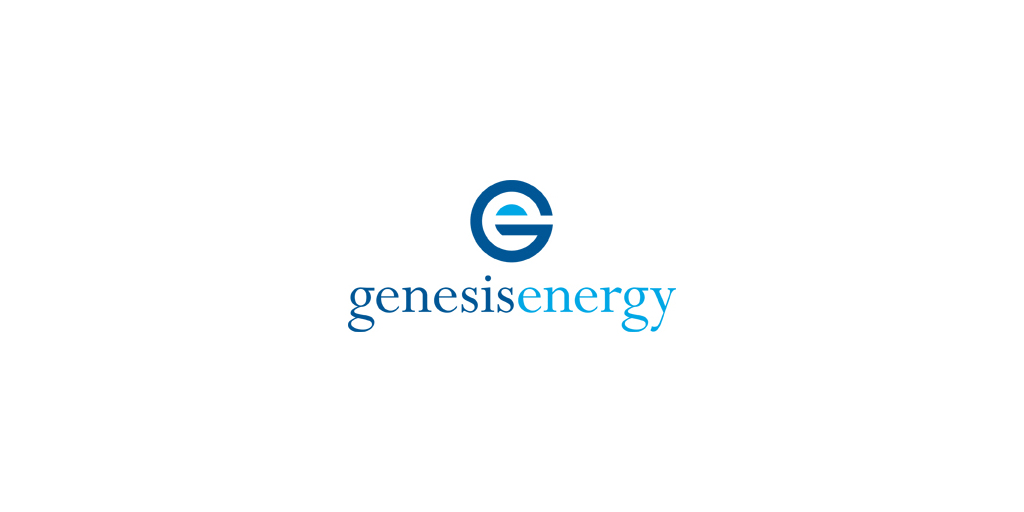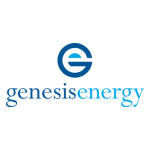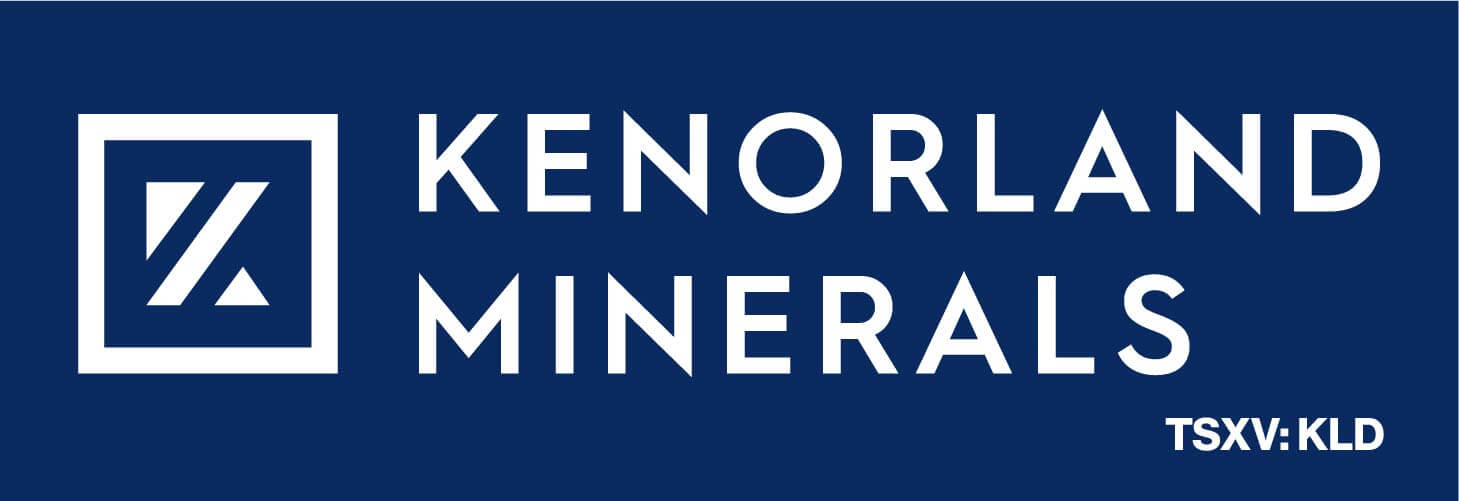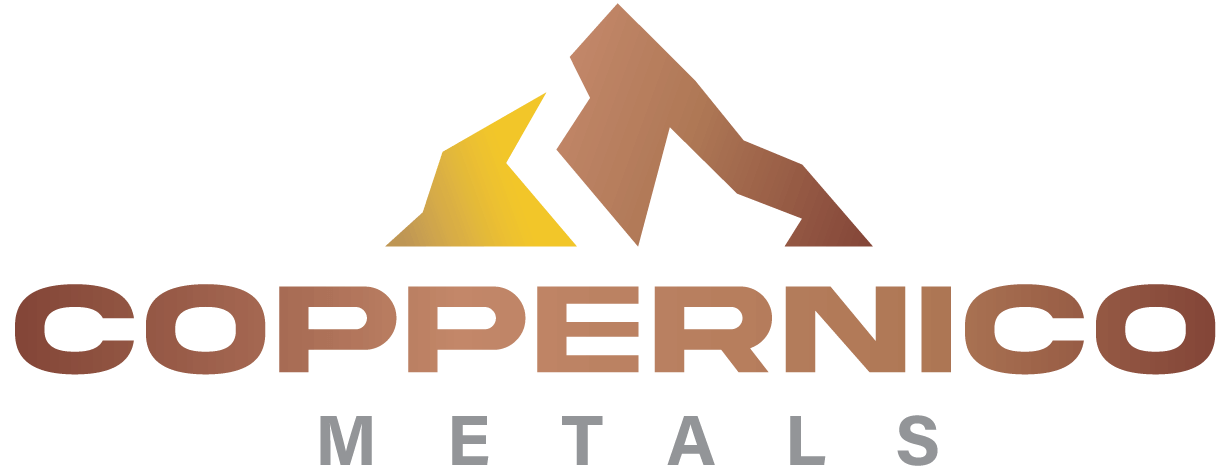Genesis Energy, L.P. Reports Second Quarter 2024 Results, Announces a Distribution Increase Attributable to the Third Quarter 2024, And Discusses Future Capital Allocation Priorities
HOUSTON–(BUSINESS WIRE)–Genesis Energy, L.P. (NYSE: GEL) today announced its second quarter results.
We generated the following financial results for the second quarter of 2024:
- Net Loss Attributable to Genesis Energy, L.P. of $8.7 million for the second quarter of 2024 compared to Net Income Attributable to Genesis Energy, L.P. of $49.3 million for the same period in 2023.
- Cash Flows from Operating Activities of $104.7 million for the second quarter of 2024 compared to $157.7 million for the same period in 2023.
- We declared cash distributions on our preferred units of $0.9473 for each preferred unit, which equates to a cash distribution of approximately $21.9 million and is reflected as a reduction to Available Cash before Reserves to common unitholders.
- Available Cash before Reserves to common unitholders of $37.6 million for the second quarter of 2024, which provided 2.05X coverage for the quarterly distribution of $0.15 per common unit attributable to the second quarter.
- Total Segment Margin of $168.3 million for the second quarter of 2024.
- Adjusted EBITDA of $148.9 million for the second quarter of 2024.
- Adjusted Consolidated EBITDA of $787.2 million for the trailing twelve months ended June 30, 2024 and a bank leverage ratio of 4.47X, both calculated in accordance with our senior secured credit agreement and discussed further in this release.
Grant Sims, CEO of Genesis Energy, said, “The second quarter was generally in-line with our expectations, absent a few one offs. Most importantly, we continue to move closer and closer to the important inflection point when we will complete our current major capital spending program and be a short time away from a notable step change in earnings and cash flow starting next year. Before getting into the details of the quarter, I thought it would be useful to report on the internal discussions we have been having at the board level regarding capital allocation and strategic priorities for the partnership.
As we have detailed in the past, and subject to certain assumptions, the current annual cash costs of running our businesses, including all cash interest payments, cash maintenance capital requirements, principal and interest payments on our Alkali senior secured notes, cash taxes, payments on our 11.24% coupon convertible preferred units, and payments of the current distribution to each common unit of $0.60 per annum works out to be approximately $620 million per year. As we look ahead to 2025, assuming a mid-year startup for our contracted offshore developments, a marginal sequential recovery in our soda ash business, and steady to marginally increasing performance in our marine transportation segment, we believe Genesis should be able to generate approximately $800 million in Adjusted EBITDA(1) in 2025 and will be approaching, and potentially exceeding, $900 million of Adjusted EBITDA(1) in 2026. Upon the completion of our offshore expansion projects over the coming months and given the current absence of any meaningful future growth capital requirements, we expect to be generating significant increasing amounts of cash flow over the next several years and beyond.
The Board has been focusing on the best ways to use this cash flow to maximize unitholder value. With our successful bond offering in May and recent extension of our senior secured credit facility into 2028, the partnership now has no near-term maturities. Additionally, given the expansion of certain buckets and permitted investments recently agreed to in our senior secured credit facility, we have ensured the partnership has more than adequate financial flexibility and ample liquidity to continue to simplify its capital structure, to reduce the long-term annual cash costs of running its businesses by redeeming high-cost convertible preferred equity and paying down debt, and yet at the same time, to start returning capital to our unitholders, all while not losing focus on our leverage ratio.
Today, we are announcing the Board has approved an increase of $0.015 in the quarterly distribution per common unit starting with the 3Q distribution, which is scheduled to be paid on November 14, 2024. This represents a 10% increase over the distribution declared with respect to the second quarter of 2024 and yet only represents an incremental annual cash cost of approximately $7.3 million. The Board believes this is an important first step and should affirm the confidence we all have in the future of our businesses. Subject to future Board deliberation and approval, we could envision this common unit distribution growth continuing in coming quarters and years as we realize increasing Adjusted EBITDA and benefit from reduced cash obligations resulting from the redemption of high coupon securities in our capital structure.
In summary, the partnership has a very clear line of sight to Adjusted EBITDA growth, minimal future growth capital expenditures, no near-term debt maturities, adequate liquidity and the financial flexibility to deploy such growing cash flow across the capital structure. Barring any unforeseen circumstances, we believe the priorities we have laid out here today are not only prudent but will deliver long-term value for everyone in the capital structure for many years to come.
With that, I will briefly discuss our individual business segments in more detail.
During the quarter, two of the major deepwater producing facilities we serve developed technical issues with either individual wells and/or their operated subsea production facilities. While the volume impacted is not overly material, a large percentage of the volume went through a facility where we touch the molecules multiple times via oil and gas gathering and downstream transportation. Our producer customers are actively working to remedy the operational issues and I would point out they are undoubtedly incentivized to alleviate these production challenges as soon as possible. However, in 5,000 to 7,000 feet of water, the remediation of these types of issues takes time, and as a result we will also be negatively impacted in the third quarter, but expect no long-term impacts whatsoever. In addition, two contracted subsea tiebacks that were scheduled for first production in the second quarter saw slight delays relative to our initial expectations but are now on-line and continuing to ramp up production and will be additive to our base of volumes as we exit 2024 and such delays have no long-term impacts as the oil will still be produced and flow through our pipelines.
Our offshore construction projects remain on schedule, and we continue to expect most of the cash spend and construction work to be completed by the end of this year. As we mentioned last quarter, the unforeseen delays with the delivery of the Shenandoah floating production system to its final location in the Gulf of Mexico will cause a small amount of the cash spend associated with the connection of the Shenandoah FPS to our new SYNC pipeline to slip into the first part of 2025. We continue to expect both the Shenandoah and Salamanca developments to be on-line in the second quarter of 2025, and as we have mentioned in the past, these two developments alone, will provide us with anticipated incremental Segment Margin, per annum, of approximately $90 million at the contracted take-or-pay level and upwards of $120 million at 75% of the producers’ respective forecast. These amounts could be upwards of $150 to $160 million per annum to the extent the producers meet or exceed 100% of their respective forecasts when fully ramped. We continue to expect both these fields to ramp up very quickly and reach initial peak production within three to six months of their respective dates of first production. We would also expect these new facilities to serve as host platforms for future sub-sea developments or tie-back opportunities which could sustain these cash flows to us for years and years into the future.
Both the Shenandoah and Salamanca developments and their combined almost 200,000 barrels of oil per day of incremental production handling capacity will be additive to the base throughput volumes with which we expect to exit 2024. We would remind everyone that these two contracted new developments are expected to use less than half of the total capacity of the new SYNC lateral and only around 50% of the incremental capacity from the CHOPS expansion projects we are completing. This means we have significant additional capacity available to offer to future developments without having to spend any more capital. To the extent we are successful in contracting this available capacity, we could add upwards of $100 million or more of incremental Segment Margin to our offshore pipeline transportation segment. Along those lines, we continue to advance discussions around multiple additional in-field, sub-sea and/or secondary recovery development opportunities around our existing infrastructure in the central Gulf of Mexico. None of these opportunities would require any incremental capital on our part and could turn to production later this year, or certainly over the next few years.
In our soda ash business, the second quarter was generally in line with our expectations despite having some lingering production challenges at our Westvaco operations as well as not having a full quarter’s worth of targeted production from Granger due to some of the operational challenges we mentioned last quarter. With the operational challenges at Westvaco now behind us, and an expanded Granger now producing at or above its nameplate design capacity of 1.2 million tons per year, we expect the second half of the year will be more representative of the full production capabilities of our soda ash operations. These incremental tons will not only increase our total sales volumes but will also allow us to further optimize our cost structure across our entire soda ash operations. I think it is also important to note that the incremental tons produced from the Granger expansion are likely some of the cheapest and lowest cost new supply in the world and despite the depressed sales prices in the first half of the year, we are confident that our entire soda ash operations will benefit from our investment in Granger for many decades to come.
The global macro conditions for soda ash continue to show signs of bottoming, if not some upward momentum, primarily in our export markets. Steady demand levels in Asia combined with the lack of incremental export tons out of China are helping balance the supply and demand dynamics in the region. Furthermore, we continue to see significant changes in the flow of physical volumes around the globe, most notably with natural soda ash tons that were moving to Asia last year but instead are now moving into Europe to fill the holes left by the shuttering of high-cost synthetic production facilities in the region. These changes in physical flows, combined with recent increases in container freight rates and some supply disruptions from other U.S. producers in the second quarter, should lead to continued tightness and the potential for soda ash prices to improve over the balance of the year and in advance of our contract negotiations for our open volumes in 2025.
As the market continues to digest the change in physical flows and we see a continued normalization of global economic activity and growth, combined with the increasing demand for soda ash driven by the transition to a lower carbon world, we believe the long-term thesis for soda ash remains in-tact. As the largest soda ash producer in the United States, and one of the lowest cost producers in the world, we remain well positioned to benefit from our soda ash business as we move in to 2025 and for many years ahead. Our sulfur services business continued to perform in-line with our expectations during the quarter.
Our marine transportation segment continues to meet or exceed our expectations. Market fundamentals remain very favorable with steady and robust demand for all classes of our vessels exceeding practical net supply of marine tonnage, which continues to be hindered by the combination of little to no new construction and the continued retirement of older equipment. Given the structural shortage in the market, we continue to operate with utilization rates at or near 100% of available capacity for all classes of our vessels with the progression of day rates being commensurate with these underlying fundamentals. Day rates likely must continue to increase from today’s levels and be expected to sustain at those higher levels for an extended period of time before we see a wave of new construction of marine tonnage. We anticipate sequential improvement in the back half of the year in our marine segment as we mostly completed the scheduled drydocking’s we mentioned last quarter and our existing portfolio of marine contracts continue to reset higher to current day rates.
Touching on the balance sheet, over the first half of 2024 we proactively, opportunistically, and successfully extended the maturity profile of our capital structure. In addition to our most recent unsecured bond refinancing in early May, we recently announced the extension of our senior secured credit facility with $900 million in commitments from both existing and new lenders with a maturity date of September 1, 2028. The relevant covenants will remain materially the same as our previous facility, although, prospectively, we will have expanded general and permitted investment baskets which will give us adequate flexibility to purchase existing private or public securities across our capital structure that we might then perceive to be a high-valued use of our capital. As a direct result of these efforts our next nearest unsecured maturity is in January 2027, approximately two and a half years away, and we have ensured the partnership has more than adequate financial flexibility and ample liquidity to execute on our plan to further simplify our capital structure and return capital to our stakeholders.
While the first half of the year presented numerous challenges, almost all of which were completely outside of our control, all have been remedied or are expected to be remedied in the near future. While we expect improved operational efficiencies and increased production, along with the potential for some marginal price improvements in our soda ash business and sequential improvements from our Marine Transportation segment through the remainder of the year, we do not believe it will be enough to offset the challenges we have experienced in the first half of the year. As a result, we are today adjusting our full year guidance for Adjusted EBITDA(1) to a range of $625 – $650 million, which at the midpoint is only approximately 6% below the low end of our original guidance. While this new range is less than we anticipated, the long-term value proposition of Genesis remains unchanged.
It is important to remember that Genesis was never a 2024 story, but instead more a story of a company our size becoming increasingly closer to the inflection point where we stop spending growth capital and start harvesting upwards of $250 – $350 million or more of cash flow per year starting as early as next year that will allow us to simplify our capital structure, lower our overall cost of capital, optimize our leverage ratio and have the ability to opportunistically create long-term value for all stakeholders in our capital structure.
Starting with the double black swan events of 2020, which included the Covid-19 pandemic and unprecedented hurricane season in terms of its effects on our offshore operations, it has undoubtedly been an eventful and challenging last four years. I’m happy to say there is finally some light at the end of the tunnel. We believe the partnership is uniquely positioned to create value for everyone in the capital structure for many years ahead, and we appreciate everyone’s continued support.
The management team and board of directors remain steadfast in our commitment to building long-term value for everyone in the capital structure, and we believe the decisions we are making reflect this commitment and our confidence in Genesis moving forward. I would once again like to recognize our entire workforce for their efforts and unwavering commitment to safe and responsible operations. I’m proud to have the opportunity to work alongside each and every one of you.”
|
(1) |
Adjusted EBITDA is a non-GAAP financial measure. We are unable to provide a reconciliation of the forward-looking Adjusted EBITDA projections contained in this press release to its most directly comparable GAAP financial measure because the information necessary for quantitative reconciliations of Adjusted EBITDA to its most directly comparable GAAP financial measure is not available to us without unreasonable efforts. The probable significance of providing these forward-looking Adjusted EBITDA measures without directly comparable GAAP financial measures may be materially different from the corresponding GAAP financial measures. |
Financial Results
Segment Margin
Variances between the second quarter of 2024 (the “2024 Quarter”) and the second quarter of 2023 (the “2023 Quarter”) in these components are explained below.
Segment Margin results for the 2024 Quarter and 2023 Quarter were as follows:
|
|
Three Months Ended June 30, |
||||
|
|
|
2024 |
|
|
2023 |
|
|
(in thousands) |
||||
|
Offshore pipeline transportation |
$ |
86,131 |
|
$ |
93,300 |
|
Soda and sulfur services |
|
41,611 |
|
|
89,255 |
|
Marine transportation |
|
31,543 |
|
|
25,758 |
|
Onshore facilities and transportation |
|
9,028 |
|
|
6,305 |
|
Total Segment Margin |
$ |
168,313 |
|
$ |
214,618 |
Offshore pipeline transportation Segment Margin for the 2024 Quarter decreased $7.2 million, or 8%, from the 2023 Quarter primarily due to producer underperformance at two of our major host platforms and an increase in our operating costs during the 2024 Quarter. The increase in producer downtime was the result of several wells being shut in during the 2024 Quarter due to certain sub-sea operational and technical challenges that our producers had during the period. The production from these wells impacted our results as they are molecules that we touch multiple times throughout our oil and natural gas pipeline infrastructure. These decreases were partially offset by an increase in volumes during the 2024 Quarter on our CHOPS pipeline (which drove an overall increase in volumes) primarily due to the Argos Floating Production System (“FPS”), which supports BP’s operated Mad Dog 2 field development. The Argos FPS has continued to ramp up production levels and achieved production levels in excess of 120,000 barrels of oil per day in the 2024 Quarter, with 100% of the volumes flowing through our 64% owned and operated CHOPS pipeline for ultimate delivery to shore. Activity in and around our Gulf of Mexico asset base continues to be robust, including incremental in-field drilling at existing fields that tie into our infrastructure, such as the Warrior and Winterfell projects which produced first oil in late June 2024 and early July 2024, respectively.
Soda and sulfur services Segment Margin for the 2024 Quarter decreased $47.6 million, or 53%, from the 2023 Quarter primarily due to lower export pricing in our Alkali Business and lower NaHS and caustic soda sales pricing in our sulfur services business during the 2024 Quarter, which were partially offset by higher soda ash sales volumes in the period. In our Alkali Business, the 2024 Quarter was impacted by a decline in export pricing as compared to the 2023 Quarter as global supply has continued to outpace demand in most markets. Additionally, the 2024 Quarter was negatively impacted by temporary operational issues at our Westvaco facility that led to lower production volumes and reduced operating efficiencies. These were offset partially by higher soda ash sales volumes in the 2024 Quarter as production from our expanded Granger facility came online in the fourth quarter of 2023 and ramped up to its nameplate capacity of approximately 100,000 tons of production per month during the 2024 Quarter. We continue to expect to see a tightening of the global soda ash supply environment in the second half of the year, and with any demand uptick (from growing lithium and solar panel manufacturers) or a supply disruption, we could see the market shift back into a balance and yield a positive price movement. In our sulfur services business, we experienced a decrease primarily due to a decline in NaHS and caustic soda pricing as a result of continued pressures on demand in South America. This decrease was partially offset by higher NaHS sales volumes in the 2024 Quarter as we experienced lower production and sales in the 2023 Quarter due to unplanned operational and weather-related outages at several of our host refineries.
Marine transportation Segment Margin for the 2024 Quarter increased $5.8 million, or 22%, from the 2023 Quarter primarily due to higher day rates in our inland and offshore businesses, including the M/T American Phoenix, during the 2024 Quarter. The increase in day rates more than offset the impact to Segment Margin from the increased number of planned regulatory dry-docking days in our offshore fleet during the 2024 Quarter. Demand for our barge services to move intermediate and refined products remained high during the 2024 Quarter due to the continued strength of refinery utilization rates as well as the lack of new supply of similar type vessels (primarily due to higher construction costs and long lead times for construction) as well as the retirement of older vessels in the market.
Onshore facilities and transportation Segment Margin for the 2024 Quarter increased $2.7 million, or 43%, from the 2023 Quarter primarily due to an increase in our rail unload volumes at our Scenic Station facility.
Other Components of Net Income (Loss)
We reported Net Loss Attributable to Genesis Energy, L.P. of $8.7 million in the 2024 Quarter compared to Net Income Attributable to Genesis Energy, L.P. of $49.3 million in the 2023 Quarter.
Net Loss Attributable to Genesis Energy, L.P. in the 2024 Quarter was primarily impacted by a decrease in Segment Margin of $46.3 million, an increase in interest expense, net, of $9.2 million, and an increase in depreciation, depletion and amortization of $9.2 million during the 2024 Quarter. This decrease in net income was partially offset by $5.9 million in unrealized gains associated with the valuation of our commodity derivative transactions in the 2024 Quarter compared to unrealized losses of $2.9 million during the 2023 Quarter associated with the valuation of our commodity derivative transactions.
Earnings Conference Call
We will broadcast our Earnings Conference Call on Thursday, August 1, 2024, at 9:00 a.m. Central time (10:00 a.m. Eastern time). This call can be accessed at www.genesisenergy.com. Choose the Investor Relations button. For those unable to attend the live broadcast, a replay will be available beginning approximately one hour after the event and remain available on our website for 30 days. There is no charge to access the event.
Genesis Energy, L.P. is a diversified midstream energy master limited partnership headquartered in Houston, Texas. Genesis’ operations include offshore pipeline transportation, soda and sulfur services, onshore facilities and transportation and marine transportation. Genesis’ operations are primarily located in the Gulf of Mexico, Wyoming and in the Gulf Coast region of the United States.
|
GENESIS ENERGY, L.P. |
|||||||||||||||
|
CONDENSED CONSOLIDATED STATEMENTS OF OPERATIONS – UNAUDITED |
|||||||||||||||
|
(in thousands, except unit amounts) |
|||||||||||||||
|
|
Three Months Ended June 30, |
|
Six Months Ended June 30, |
||||||||||||
|
|
|
2024 |
|
|
|
2023 |
|
|
|
2024 |
|
|
|
2023 |
|
|
REVENUES |
$ |
756,261 |
|
|
$ |
804,662 |
|
|
$ |
1,526,366 |
|
|
$ |
1,595,274 |
|
|
|
|
|
|
|
|
|
|
||||||||
|
COSTS AND EXPENSES: |
|
|
|
|
|
|
|
||||||||
|
Costs of sales and operating expenses |
|
601,381 |
|
|
|
616,520 |
|
|
|
1,210,648 |
|
|
|
1,270,039 |
|
|
General and administrative expenses |
|
18,546 |
|
|
|
16,931 |
|
|
|
33,555 |
|
|
|
31,483 |
|
|
Depreciation, depletion and amortization |
|
77,613 |
|
|
|
68,427 |
|
|
|
151,384 |
|
|
|
141,587 |
|
|
OPERATING INCOME |
|
58,721 |
|
|
|
102,784 |
|
|
|
130,779 |
|
|
|
152,165 |
|
|
Equity in earnings of equity investees |
|
12,213 |
|
|
|
14,811 |
|
|
|
28,654 |
|
|
|
32,364 |
|
|
Interest expense, net |
|
(70,870 |
) |
|
|
(61,623 |
) |
|
|
(139,604 |
) |
|
|
(122,477 |
) |
|
Other expense |
|
(1,429 |
) |
|
|
(4 |
) |
|
|
(1,429 |
) |
|
|
(1,812 |
) |
|
INCOME (LOSS) BEFORE INCOME TAXES |
|
(1,365 |
) |
|
|
55,968 |
|
|
|
18,400 |
|
|
|
60,240 |
|
|
Income tax expense |
|
(22 |
) |
|
|
(290 |
) |
|
|
(831 |
) |
|
|
(1,174 |
) |
|
NET INCOME (LOSS) |
|
(1,387 |
) |
|
|
55,678 |
|
|
|
17,569 |
|
|
|
59,066 |
|
|
Net income attributable to noncontrolling interests |
|
(7,357 |
) |
|
|
(6,334 |
) |
|
|
(14,960 |
) |
|
|
(11,366 |
) |
|
NET INCOME (LOSS) ATTRIBUTABLE TO GENESIS ENERGY, L.P. |
$ |
(8,744 |
) |
|
$ |
49,344 |
|
|
$ |
2,609 |
|
|
$ |
47,700 |
|
|
Less: Accumulated distributions and returns attributable to Class A Convertible Preferred Units |
|
(21,894 |
) |
|
|
(22,910 |
) |
|
|
(43,788 |
) |
|
|
(46,912 |
) |
|
NET INCOME (LOSS) ATTRIBUTABLE TO COMMON UNITHOLDERS |
$ |
(30,638 |
) |
|
$ |
26,434 |
|
|
$ |
(41,179 |
) |
|
$ |
788 |
|
|
NET INCOME (LOSS) PER COMMON UNIT: |
|
|
|
|
|
|
|
||||||||
|
Basic and Diluted |
$ |
(0.25 |
) |
|
$ |
0.22 |
|
|
$ |
(0.34 |
) |
|
$ |
0.01 |
|
|
WEIGHTED AVERAGE OUTSTANDING COMMON UNITS: |
|
|
|
|
|
|
|
||||||||
|
Basic and Diluted |
|
122,464,318 |
|
|
|
122,579,218 |
|
|
|
122,464,318 |
|
|
|
122,579,218 |
|
Contacts
Genesis Energy, L.P.
Dwayne Morley
Vice President – Investor Relations
(713) 860-2536







